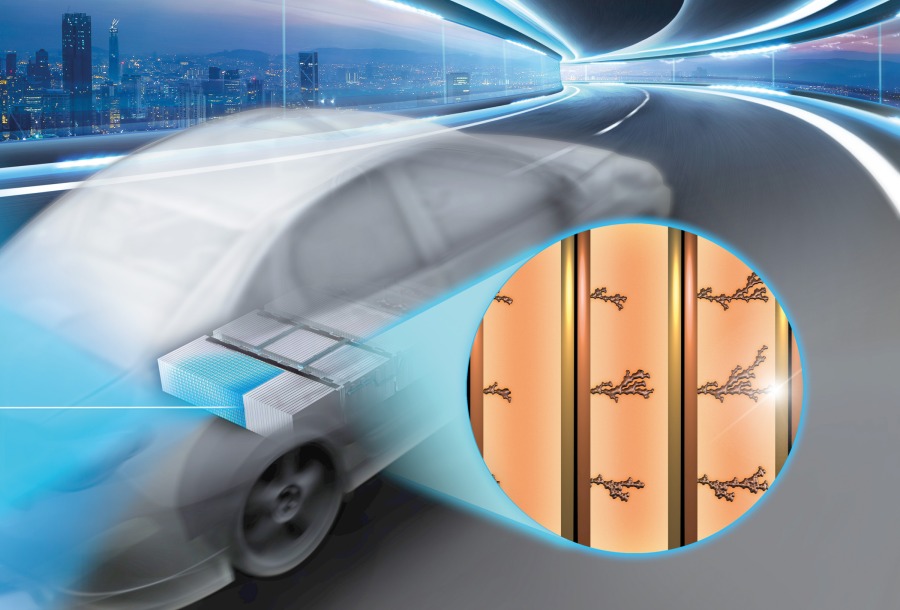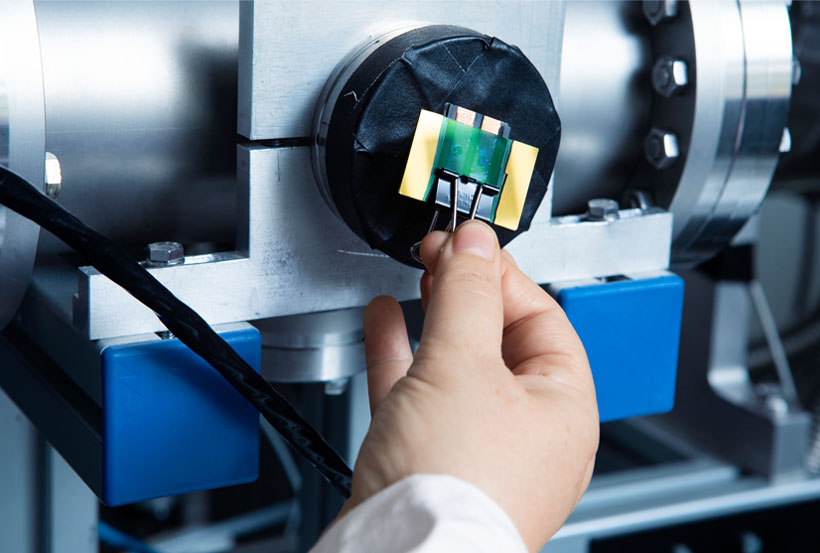
Energy
PETRA IV can be used to develop customised materials for technological innovations – and thus important building blocks for the energy transition and environmental protection.
The X-rays from PETRA IV will reveal how the nanostructures inside batteries change while they are in operation. For example, tiny metallic deposits form on the electrodes over time. These dendrites can grow and lead to defects. At PETRA IV, such details can be studied and used to develop functional materials for better batteries.

Light for high-contrast images
- The brilliant X-rays penetrates matter, making the friction process at the contact surface between two materials visible.
- Abrasion experiments can already be planned and tested today at PETRA III. Only PETRA IV, however, will focus the X-ray beam so finely that even the smallest particles will be distinguishable.
- In X-ray light, particles produce characteristic scattering patterns. The high coherence of PETRA IV will guarantee the necessary high image contrast to detect even the smallest, potentially most dangerous particles in a time-resoved manner.
Solar cells and nanomaterials
Tailor-made materials can not only serve as a possible wear-free machine base, they can also be important building blocks for the energy transition or environmental protection. Findings from research with X-rays help to develop artificial leaves or nanosponges – for example, ultrathin solar cells and electricity-producing layers.

Heidrun Hillen
I am happy to answer your questions about PETRA IV.
Further research topics

Healthcare
How can diseases be better tackled?

New materials
How can we save resources?

New technologies
What do we need for the digital world of tomorrow?

Earth and the environment
How do we preserve our ecosystems?

Cultural heritage
How can we preserve our cultural treasures?



